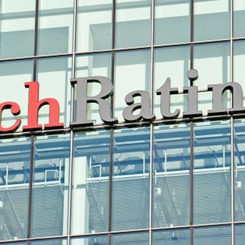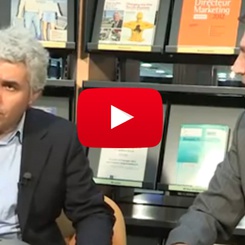The economic environment surrounding European Business Schools is changing fast; thirty years ago, higher education institutions lived a comfortable life of quasi-monopoly; degrees delivered in one country would not be have been recognized in another country; as a consequence, students had little incentive to shop around for the best value for money. It would not have dawned on anyone to compare a German program to a French one. In the meantime, the removal of national and administrative barriers, combined with an intensive standardization process, has lead to the creation of a genuine international market in business education. As a consequence, many education and business journals now publish various rankings, irrespective of their country of origin. These changes are even stronger within the European Union, where the process of degree normalization is almost complete.
Now facing much stronger competition, Business Schools have come to realize that “strategy” matters for them, just as it does for the “private business”, the object of their teaching and research. Good management and good strategy requires that the top administration of the school is able to take the right steps at the right moment. Most often, such steps bring about some form of product differentiation: geographic (schools can expand their activities abroad), horizontal (invest in brand image and in some moderate specialization) and vertical (program quality). In this respect, Business Schools now behave very much like corporations: discussions on the Executive board of a School sound more and more like those of a private company’s board; school directors talk about business models, net present value, differentiation strategy, communication, and so on. Some will even push the comparison even further to talk about students as “customers”. Like in private business, performance-based compensation is a standard expression in the HR management of most Business Schools. Almost all European Business Schools run now complex “incentive systems”, in general a bonus scheme for publication.
Experience has shown that a good strategy can help a school reach a top position in rankings and in the eyes of students and recruiters; and a poor strategy can bring a school to its knees in a short period of time. It is of course beyond the purpose of this short paper to try to answer to the question “what is a good strategy” and even less so to understand good research management.
With one or two exceptions, leading business schools are all strong research institutions, contributing to advancing knowledge in management and generating an impressive flow of publications in leading journals. Furthermore, the overall quality of a degree is difficult to assess because it relies on many subjective and sometimes quickly changing dimensions. In this context, one efficient way to signal that a school can deliver high quality education is to follow the example of these leading schools and publish a substantial amount of research. In this environment of imperfect information, schools that do not play the publication game might soon see their reputation fading out and their resources too. Like it or not, having a (good) strategy for research is a key success factor for a Business school these days. [see Note]
Yet the similarity between Business Schools and companies stops here. Unlike corporations that have more or less well defined hierarchies, with strictly defined command and control processes, schools are systems based on collegial decision-making and depend on a large degree of individual “academic entrepreneurship”. While in a typical company a strategy can be imposed top down, and those who dislike it can just leave the firm, in a school such an attempt could only fail. Any education strategy, including research strategy, should be developed working with the Faculty, i.e. those who are expected to be the vectors of this strategy.
Thus the efficiency of any strategy depends on the processes underlying the elaboration and implementation of such strategy. A strategy will not become effective if it is not understood and shared by those people this strategy aims to impact. No research strategy can be successful if the majority of professors do not support it. Hence, it is important to maintain a permanent state of alertness within research centers regarding the goals of the schools that go beyond simple reporting of performance indicators. Professors, as actors of the strategy, should also contribute to its design; this does not rule out the essential role of the top management of the school that is responsible for developing the right processes. A right process should be rule-based; rules must be fair, transparent, and should apply to all in the same way. The rules must be set at the appropriate level of generality; rules applying to all details are killing initiative and creativity; rules too vague open the door to opportunistic behavior.
A good process also requires that the strategic discussion about research should not be discontinued. For instance, should a School decide to make a strategic realignment every five years, the involvement of the Faculty in the definition of a research strategy should continue over this period. This can be done by working on annual (or bi-annual) projects such as “how to improve research performance?”, “what is the research position of the school in the general landscape?”, “what are the key academic challenges for researchers in the ten years to come?”, etc.
The role of these discussions are to make sure that professors understand the research goals of the institution, and, very importantly, that they understand each other. Sometimes tensions between scholars are determined by poor communication. Clarifying goals and roles is a powerful element of raising research productivity.
One important element of the debate is information provided by external auditors, if the latter are taking their job seriously. Many schools face the challenge of raising the quality of their research. This requires a cold and critical assessment of their existing performance. Like many other exercises of human introspection, research assessments performed by internal teams are quickly facing the difficulty of evaluating colleagues and friends. Such forms of evaluation from within might not be able to bring about the radical reforms need to achieve a strong performance improvement. It is true, external experts might have a weaker understanding of the subtle dynamics of research within a school, and might suggest solutions that do not match the culture or values of the institution. Probably, a mix of external and internal recommendations should be the best way to achieve a gradual improvement in the quality of research.
Further Reading:
Fouad El Ouardighi, Konstantin Kogan, Radu Vranceanu. 2013 "Publish or teach? Analysis of the professor's optimal career path.” Journal of Economic Dynamics and Control Volume 37, Issue 10, October 2013, Pages 1995–2009
Besancenot, Damien, Joao Ricardo Faria, and Radu Vranceanu. 2009, "Why business schools do so much research: A signaling explanation." Research Policy 38, 7, pp. 1093-1101.









